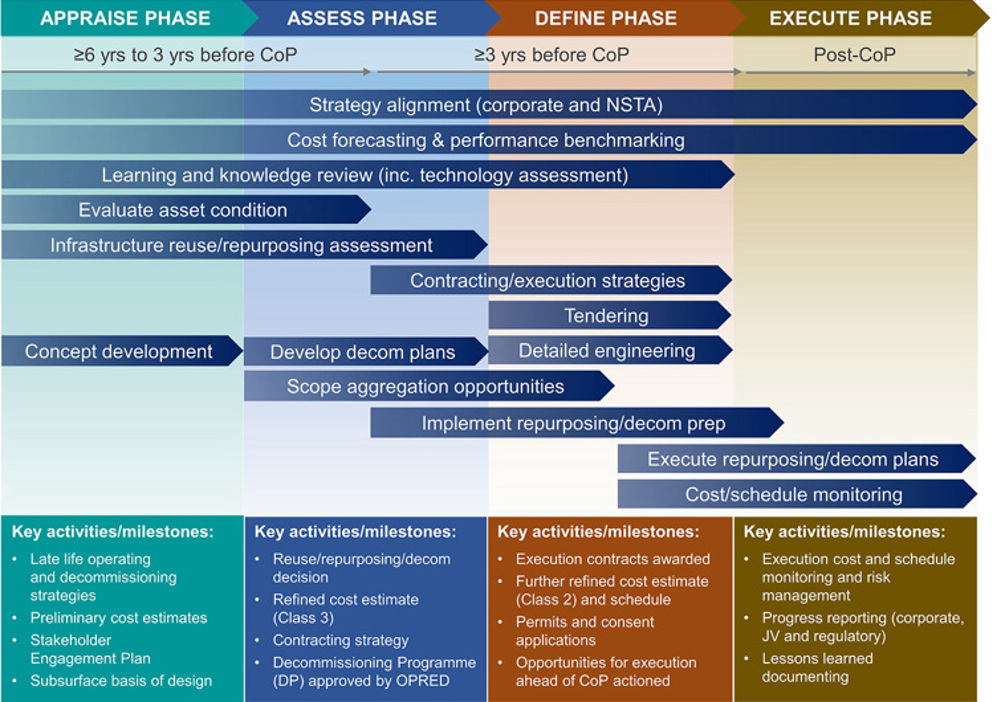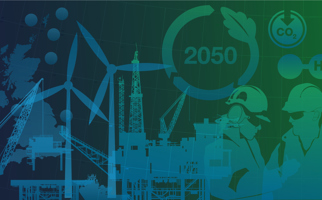
Repurposing offshore oil and gas infrastructure can reduce waste and accelerate energy transition.
The OGA Strategy and NSTA’s Decommissioning Strategy set out obligations, expectations, and priorities for owners of redundant offshore oil and gas infrastructure to consider repurposing infrastructure once hydrocarbon production ends.
Repurposing offers opportunity for oil and gas infrastructure to remain in the marine environment to be used or safeguarded for future use by another industry, for example, for carbon capture and storage. Repurposing reduces waste and offers time and cost efficiencies to new users.
Prior to planning for decommissioning, operators must evaluate the repurposing potential for the assets. This should be done during the late life operating phase, at least six years prior to the expected cessation of production (CoP) date, following the process set out in the Decommissioning Glidepath:

The NSTA undertakes a structured approach in evaluating new or ongoing uses for infrastructure. Operators with fields six years from Cessation of Production (CoP) must complete and submit a description of opportunities for infrastructure reuse or repurposing, and any considerations for other alternatives to decommissioning, using the standardised form in the template at the link below:
Click here to download a version of the Repurposing screening matrix - (Please download the file and use the desktop version of Excel to edit it, then send the completed version to decom.team@nstauthority.co.uk)
This screening tool supports NSTA-Operator engagements on this matter and aims to identify infrastructure that may have value in being reused or repurposed, highlighting potential barriers or constraints related to this – and providing insights on any other alternatives to decommissioning that the operator is aware of or considering.
The NSTA will look to identify opportunities that align with their strategic objectives and will work with industry on these to overcome barriers, including where there is feasibility for existing oil and gas infrastructure to play a key role in enabling the energy transition.


